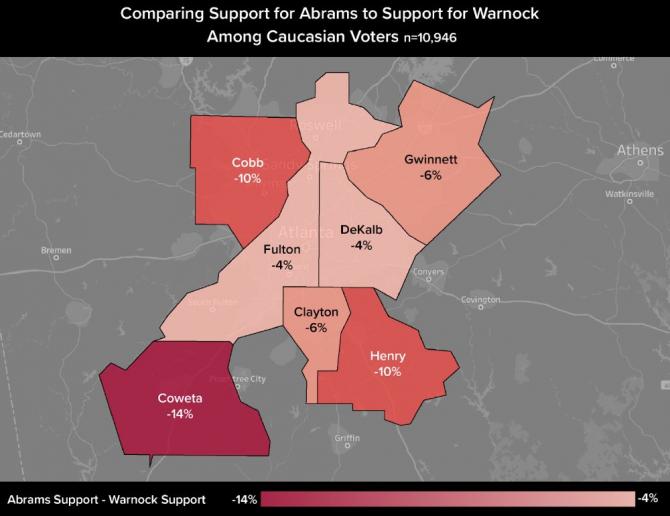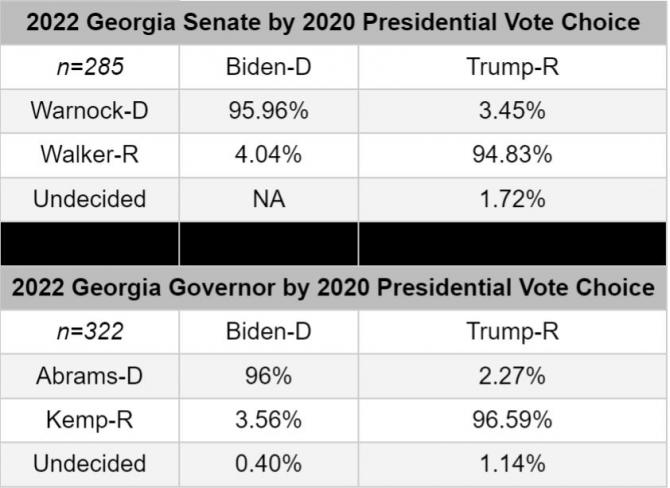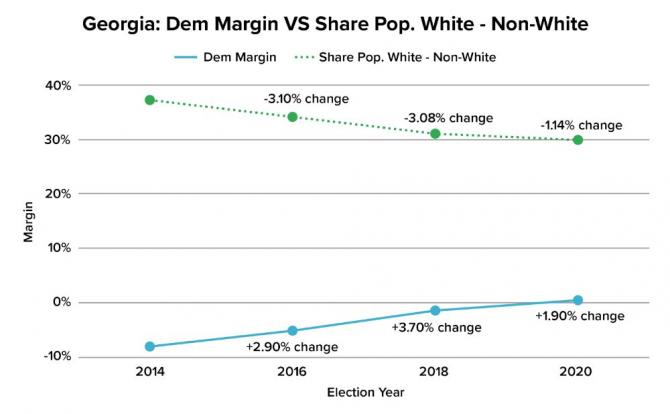Chip in Now to Stand Up for Working People
Working people need a voice more than ever and Working America is making that happen.
Working people need a voice more than ever and Working America is making that happen.
Matt Morrison
11/02/2022
What is really happening in Georgia?
In 2020, Georgia finally broke through as a national battleground state with Joe Biden’s razor-thin 11,779-vote win over Donald Trump and the election of Democrats Raphael Warnock and Jon Ossoff to the U.S. Senate. This was a state that had been long dominated by GOP-ers and the Dixiecrats before them.
This year, polling estimates have pointed to Republican Brian Kemp opening a widening lead in the gubernatorial race over Democrat Stacey Abrams, and we all continue to watch in astonishment as Herschel Walker runs a competitive contest against Warnock.
Could the polls be wrong? That’s often asked by those looking for hope. After all, the leading pollsters tell us that Kemp is garnering nearly 20% of Black voters against Abrams. (For context, according to Catalist data, Trump won up to 10.5% of Black voters in Georgia.)
But we simply don’t know and can’t know whether the polls are off. So let’s focus on what we do know.
Since Labor Day, Working America canvassers have had 75,000 persuasion conversations with voters in the Atlanta region, which accounts for two-thirds of the state’s votes, mostly in the suburban counties surrounding the city. From those discussions, a few things come through quite clearly.
[Reminder: Canvass data and polling data ask different questions and have different uses. Canvass data is non-random, but is large scale compared to any polling and has a higher response rate, avoiding some of the concerns that exist around using polling data to generalize conclusions about the broader population.]
Contrary to some other analyses, we see that Black voters are as likely to support Abrams as they are to support Warnock . Abrams enjoys slightly higher support among Black women and Warnock among Black men.


White voters, especially those outside the urban core in Fulton and DeKalb counties, are where we see the divergence between Warnock and Abrams support. It should be lost on no one that the Senate race features two Black men running against each other, while the gubernatorial race has a stark racial and gender contrast.
Our insights on this question come from our research arm’s multi-year tracking survey.
In the 2020 statewide tracking survey (conducted by our separate research arm), we asked 598 Georgia voters which candidate they were choosing for president. We asked those same voters last week (Oct. 22) who they are supporting for Senate and governor and learned that both Warnock (95.96%) and Abrams (96%) have largely held the Biden coalition intact.


Perhaps counterintuitively, Kemp (96.59%) has done a slightly better job of maintaining the Trump coalition than Trump’s Senate draft pick Herschel Walker (94.83%).
These surveys are not especially large samples, but they cast doubt on the most popular theory for explaining the magnitude of difference in vote share in 2022 polls compared to the 2020 outcome.
Predicting the composition of the electorate is always a guess. But here we have some remarkably consistent history to draw upon.
Going back to 2014, the share of the voters who are people of color has increased an average of 2.4 percentage points each cycle and the Democratic margin has increased by roughly the same amount. These are sustained and connected demographic and partisan trends. There is every reason to expect the demographic trend to continue, although whether it continues to drive a corresponding trend in partisan results is perhaps the key question of this race.


(Click here to see data.)
While final turnout is not knowable until after the election, Democrats appear to be leading the early vote in Georgia. Some data firms report that as of Oct. 24, 52.3% of likely Democrats have cast early votes, compared to only 40.3% of likely Republicans. That’s a bigger gap than in 2020, when the split was 48.1% to 44.7%. Another slice of the early vote data shows that the share of these ballots from white voters is in line with 2020 (60.3% in 2020 vs. 60.5% in 2022). The share of early votes from Black voters is up to 34.6% vs. 32.8% in 2020, but other voters of color are down.
The pollsters say two things: First, that Kemp and Walker are overcoming Georgia’s demographic trend toward diversity by making inroads into the Black vote. Second, that Kemp is leading Abrams because he is drawing more white voter support than his GOP ticket mate Walker. Our data agrees with the latter, but not the former.
The exact truth will be known on Election Day in less than two weeks, but the long-term implications for transforming Georgia into part of the national Democratic coalition are clear now. The continuing work to register and mobilize voters of color, capitalizing on shifting demographics, is one of the reasons the state is now so competitive. However, continuing to hold or grow Biden’s 2020 share of the suburban and exurban white vote, clearly doable as is being demonstrated by Senator Warnock’s impressive efforts, and fortifying or expanding support among the Black vote must both be a key part of our 2024 strategy.
But for right now, we are deploying our final barrage of canvass and digital persuasion tactics that will generate tens of thousands of additional votes for Warnock and Abrams. We remain hopeful that, along with the work of a broad community of organizers that has been building in the state for years, we’ll get to the results we want of 50% plus 1 in both contests (although we are preparing for a runoff as well).
As always, thank you for your support of Working America. See you on the doors,
Matt
We use cookies and other tracking technologies on our website. Examples of uses are to enable to improve your browsing experience on our website and show you content that is relevant to you.